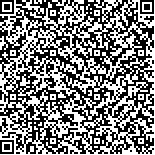下载中心
优秀审稿专家
优秀论文
相关链接
摘要

随着社交网络的普遍发展,大量的讯息透过智能手机发布在个人的微博或其他社交网站。台湾地区的社交网站以脸书(Facebook)的使用量最大,平均每天有近千万笔的讯息量,大多数的讯息多以食衣住行或个人讯息为主,但从本研究所撷取自2010年至2015年的数据中显示,公众在社交网站所分享的信息中具有降雨、淹水或相关灾情的讯息,而这些讯息具有极高比例的正确性。由于社交网站无法提供私人讯息,故本研究将从社交信息中,以地点为单位撷取大量的数据信息再辅以语意关键词萃取出有关可作为淹水预判的讯息数据。为检核资料的可性度,本研究透过历史台风数据FLO-2D仿真重建淹水之空间信息进行检核。从研究比对分析中发现,经萃取后的公众信息其与灾害的关联性及正确性相当显着,故透过社交网站中大量的非结构讯息,透过语意及空间的转换,可萃取转化为防灾信息,对广域的都市治理而言,此一讯息将可作为预判区域淹水或防救灾情报之有效参考。
Short-term heavy rainfalls have become the norm as the climate changes.However,previous city drainage design is often unable to cope with this rainfall pattern.Thus,the damage caused by urban flood disasters is high,especially because of relatively high population densities.Several sudden rains in Taiwan have caused flooding in the cities in recent years.Taichung's Shalu area experienced flooding because of the heavy rains brought by typhoons Sura,Tam Mei,and Su Li from 2012 to 2014.The Taichung City Government has made flood remediation investments and has built wireless sensing devices to convey real-time flooding information.However,a considerable amount of resources are required to establish a complete monitoring network,and such requirement is unachievable in practice.Therefore,how to use innovative tools to enhance cities' flood adaptability has become an important issue.As a result of the popularity of smart phones,an increasing number of people publish personal information on popular Internet communities,such as Facebook,Flickr,Twitter,and Plurk.Using their smart devices,people can take pictures and post information to share with community members.The shared information is tagged with coordinate points.Information from a large group of people can thus be screened and integrated for use as valuable flood information.
This study investigates the online descriptions of direct experiences during flooding events to obtain the spatial information of floods through semantic retrieval and filtering analysis and thereby identify flood patterns.Sensed disaster data,credible information extracted from Internet communities,and the use of such information as city flooding information can effectively support the assumptions and limitations of physical sensing mathematical models,particularly in terms of the degree of effective operation and adequate maintenance of urban drainage systems and grid mode homogenization.This study,which on urban flooding events in history,extracts real-time flood-related information from online communities,such as Facebook,and compares the actual values of the flood for spatial analysis.Moreover,this study filters VGI on the basis of semantic meaning and obtains 49 "rain"-related descriptions.The descriptions are matched to the flood spatial information reconstructed with FLO-2D simulation,with the result indicating that the distribution correlation is significant.The method of converting human-sensed non-structured information from Internet communities into usable spatial information,extracting usable information available in online communities,converting this information into disaster prevention information,and using physical-sensing FLO-2D simulation to reconstruct flood spatial information for a correlation analysis is unique and innovative.Results show that a non-task-based, non-specific community can compensate for the insufficiency of detective equipment and further provides flood information.Rainfall situations in other areas can be detected with this method and be framed using Facebook's community check-in information to detect possible flooding ranges.Using flood information from online communities to provide initial flood information and to govern cities with broad areas is a feasible method.

